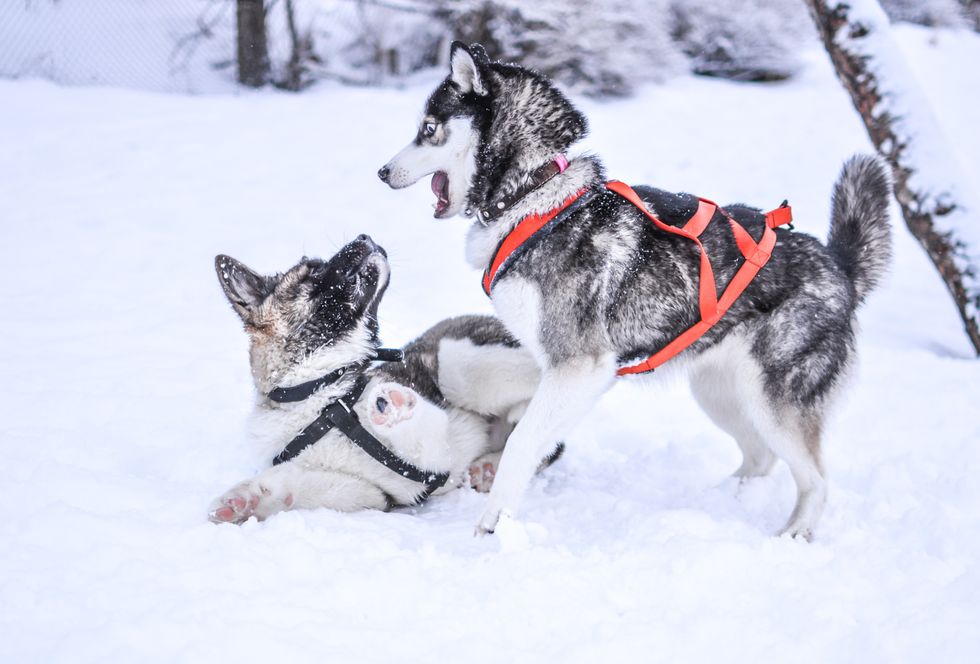If you learned about the Iditarod when you were in elementary school, you probably thought it was the coolest thing on the planet. If you don't know what it is, the Iditarod is a dog sled race that takes place every year over the course of multiple days, and when I was in elementary school we learned an epic story about how the winner around 10 years ago got a room in an inn with the guy in second place on the last night of the race and then snuck out at around 2 in the morning and woke up his dogs and finished the race before the sun came up. It's truly competitive and requires a lot of training and a connection to your animal, three things that can be found in another winter sport that is growing in popularity.
Skijoring is a Norwegian winter sport in which a person on skis is pulled by either a horse or a dog (or two to three dogs). Generally, athletic dogs such as Pointers, Setters and herding breeds are best prepared for skijoring, as well as northern breeds, such as Siberian and Alaskan Huskies, Malamutes, Samoyeds, and Inuit dogs. However, any large energetic dog is capable of enjoying this sport (just don't try it with yours unless you're both prepared). There are competitions in both sprint races as well as long-distance races, so it is essentially comparable to track sports.
The current competitions in North America began in Scandinavia and came out of the older sport of Pulka (which is essentially the same as skijoring, only pulks are used to transport people as well as other goods and plastic sleds are the primary vehicles). Most American races are between 5 kilometers and 20 kilometers in length. The longest race is the Kalevala held in Karelia, Russia, with a distance of 440 km (270 mi). Next is the River Runner 120 held in Whitehorse, Yukon, with a distance of 190 km (120 mi). For comparison to the Iditarod, this dog sled race is 938 miles. The skier uses either a classic diagonal stride cross-country technique or the faster skate skiing technique. In races, the skate-skiing technique is almost exclusively used. The skis are hot waxed from tip to tail, to avoid slowing the dog team down. Classic skis with grip wax are not used for races but are occasionally used for extended back-country travel.
Equestrian skijoring is most common in the U.S. as it is actually a convenient and fun form of travel for people in places such as Hanover or Jackson Hole. On the more competitive side, equine skijoring races involves accelerating to over 40 mph in just three strides covering a straight track roughly 900 feet in length. Skiers must navigate a series of jumps and gates and capture rings while being pulled by a rope at speeds up to 60 mph as they accelerate around turns. Jumps can reach 7 feet in height but are typically lower or roller style.
Skijoring has grown immensely recently, and there are now international leagues for the sport. Honestly, I wouldn't be surprised to see it make its way into the Winter Olympics soon, as it is a cheap, convenient, and fun sport for many people. If you're really interested in seeing how competitive these races can get, check one out here.





 mr and mrs potato head
StableDiffusion
mr and mrs potato head
StableDiffusion










